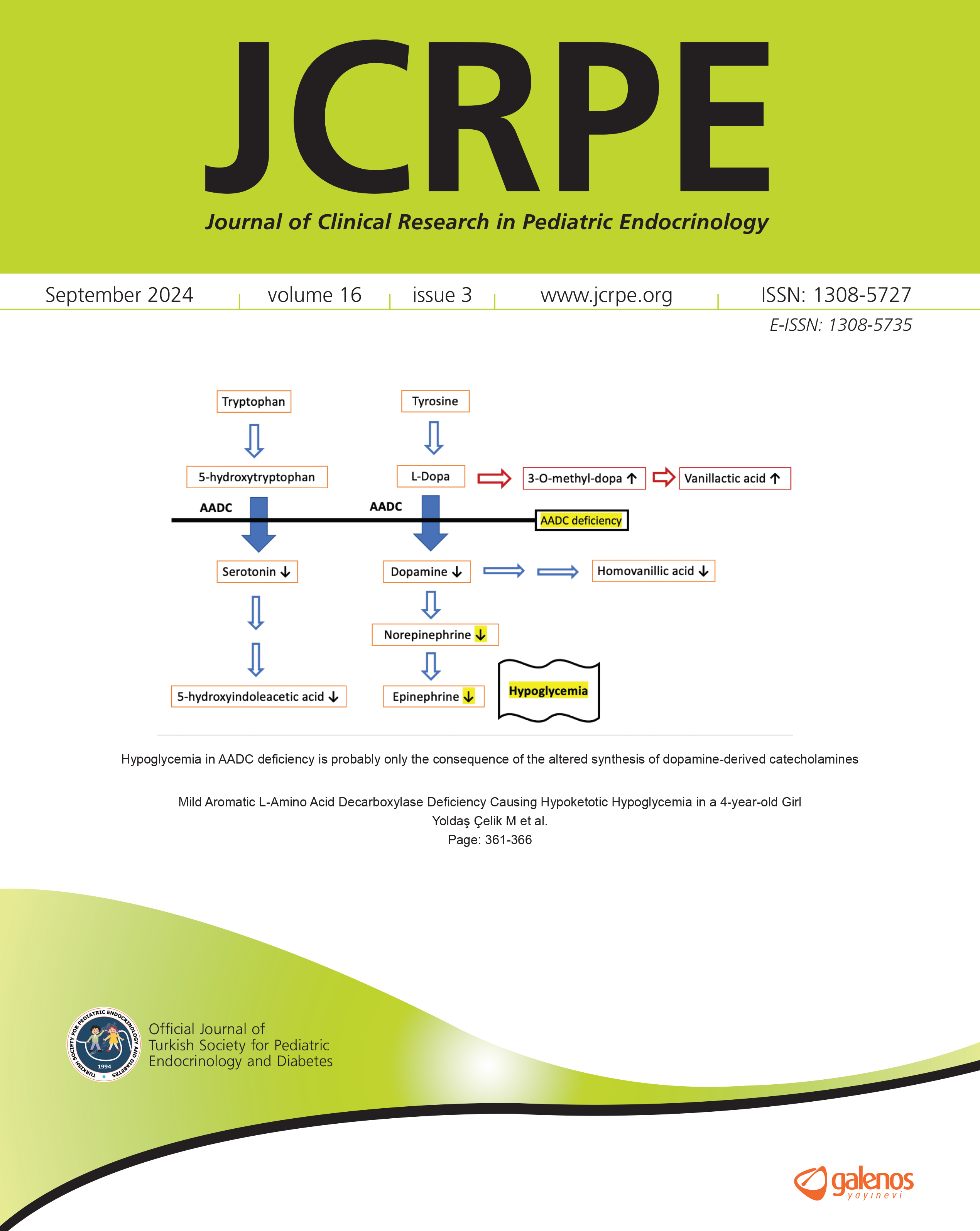Expanding the Clinical Features of Schimke Immuno-Osseous Dysplasia: A New Patient with a Novel Variant and Novel Clinical Findings
Ceren Alavanda1, Şenol Demir2, Serçin Güven3, Mehmet Eltan4, Sevgi Bilgiç Eltan5, Asena Pınar Sefer5, Serim Pul3, Tülay Güran4, Harika Alpay3, Ahmet Arman2, Pınar Ata2, Serap Turan41Department of Medical Genetics, Van Research and Training Hospital, Van, Türkiye2Department of Medical Genetics, School of Medicine, Marmara University, Istanbul, Türkiye
3Department of Pediatric Nephrology, School of Medicine, Marmara University, Istanbul, Türkiye
4Department of Pediatric Endocrinology, School of Medicine, Marmara University, Istanbul, Türkiye
5Department of Pediatric Allergy and Immunology, School of Medicine, Marmara University, Istanbul, Türkiye
Schimke Immuno-Osseous Dysplasia (SIOD) (MIM: 242900) is an ultra-rare autosomal recessive pan-ethnic pleiotropic disease. Typical findings of this syndrome are steroid-resistant nephrotic syndrome, cellular immunodeficiency and spondyloepiphyseal dysplasia and facial dysmorphism. Biallelic variants in the SMARCAL1 gene cause SIOD. The five-and-half-year-old female patient was evaluated because of short stature, dysmorphism, hypercalcemia, hypophosphatemia and elevated FSH levels. Karyotype analysis and array-CGH testing were normal. Clinical Exome Sequencing was performed via next-generation sequencing to analyze genes associated with hypophosphatemia. No pathogenic variant was detected. The subsequent detection of proteinuria during her follow-up for cross-fused ectopic left kidney ultimately facilitated the diagnosis of SIOD, although no obvious spondyloepiphyseal dysplasia was detected. Re-analysis of CES revealed a novel homozygous c.2422_2427+9delinsA pathogenic variant in the SMARCAL1. One hundred twenty-five SIOD cases from 38 literature reporting SMARCAL1 gene pathogenic variants were reviewed to investigate whether hypercalcemia, hypophosphatemia and elevated FSH levels had been previously reported in SIOD patients. This review revealed that this was the first time these findings had been reported in a SIOD patient. This report expands not only the phenotypic but also genotypic spectrum of SIOD.
Keywords: SMARCAL1, hypercalcemia, hypophosphatemia, ectopic kidney, gonadal dysfunctionManuscript Language: English



























